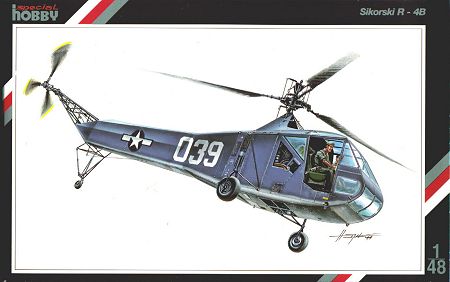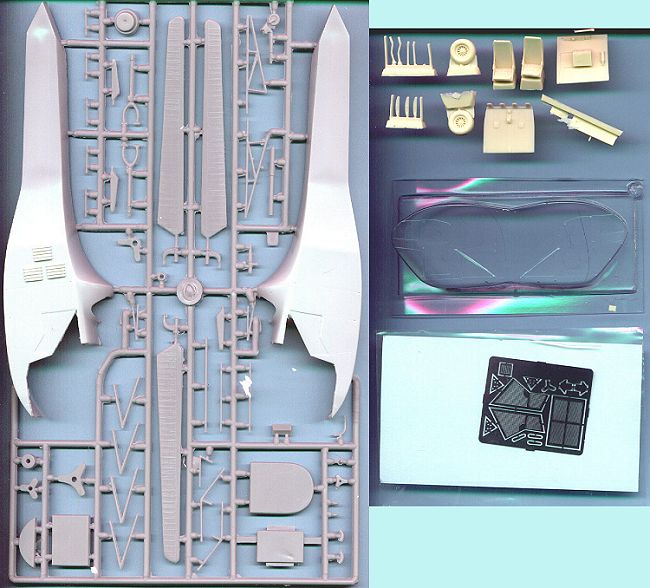
|
KIT: |
Special Hobby's 1/48 Sikorsky R-4B |
|
KIT # |
SH 48002 |
|
PRICE: |
MSRP: $21.00 |
|
DECALS: |
One aircraft |
|
REVIEW & PHOTOS BY: |
|
|
NOTES: |

|
HISTORY |
As an airplane-minded boy growing up in Denver, I distinctly remember being out in the back yard one day when I heard a very strange noise. I was already at that young age well used to looking up at strange noises to see the airplanes that usually made them, but this was an airplane unlike anything else I had ever seen! It didn't have any wings! My father came out to see it cruise slowly past and told me it was a "helicopter," which he also called a "whirly-bird" and an "egg-beater" when I asked how it could fly. In later years, looking at photographs, I identified it as a Sikorsky R-4B, most likely a trainer flying out of the nearby Lowry AFB.
The R-4B was the first American helicopter to see service, being a development of the Sikorsky V-1200, Igor Sikorsky's first successful helicopter. Essentially, from the rear of the cockpit aft, it was the V-12oo attached to a cockpit with two side-by-side seats. The first one entered USAAF service in 1942. By 1944, they were used by the Coast Guard and had actually participated in a rescue where the helicopter's unique flight capabilities were essential to the successful outcome. Three of them actually made it to Okinawa, where they were first used for battlefield reconnaissance in the closing days of that battle.
The R-4 was small and underpowered, barely able to lift a pilot and passenger. It is the direct ancestor of today's H-60 Blackhawk.
|
THE KIT |

Special Hobby have mostly released very good 1/72 scale limited-run kits prior to their release of the Mi-1 helicopter and now the Sikorsky R-4. So far as production quality is concerned, it is equal to its predecessors.
The kit comes with one sprue of light grey plastic with the fuselage, rotors, and landing gear, all molded crisply with only a bit of flash. The cockpit canopy is a thick vacuform, in halves. It will benefit from being dipped in Future to make it more clear, and likely a modeler will want to cut off the doors (it was mostly flown without them) to allow a good look at the well-detailed interior. Most of the interior detail is resin, including two seats with seatbelts molded in. There is a photo-etch fret with extensive grillwork and other detail parts for the rotorhead. Looking at the instructions, the rotorhead appears to have sufficient detail out of the box to satisfy all but the most-maniacal helicopter modelers. Judging from the instruction sheet, assembly appears straightforward.
Recommended.
Modeling Madness thanks Squadron Mail Order (http://www.squadron.com) for providing the review copy.